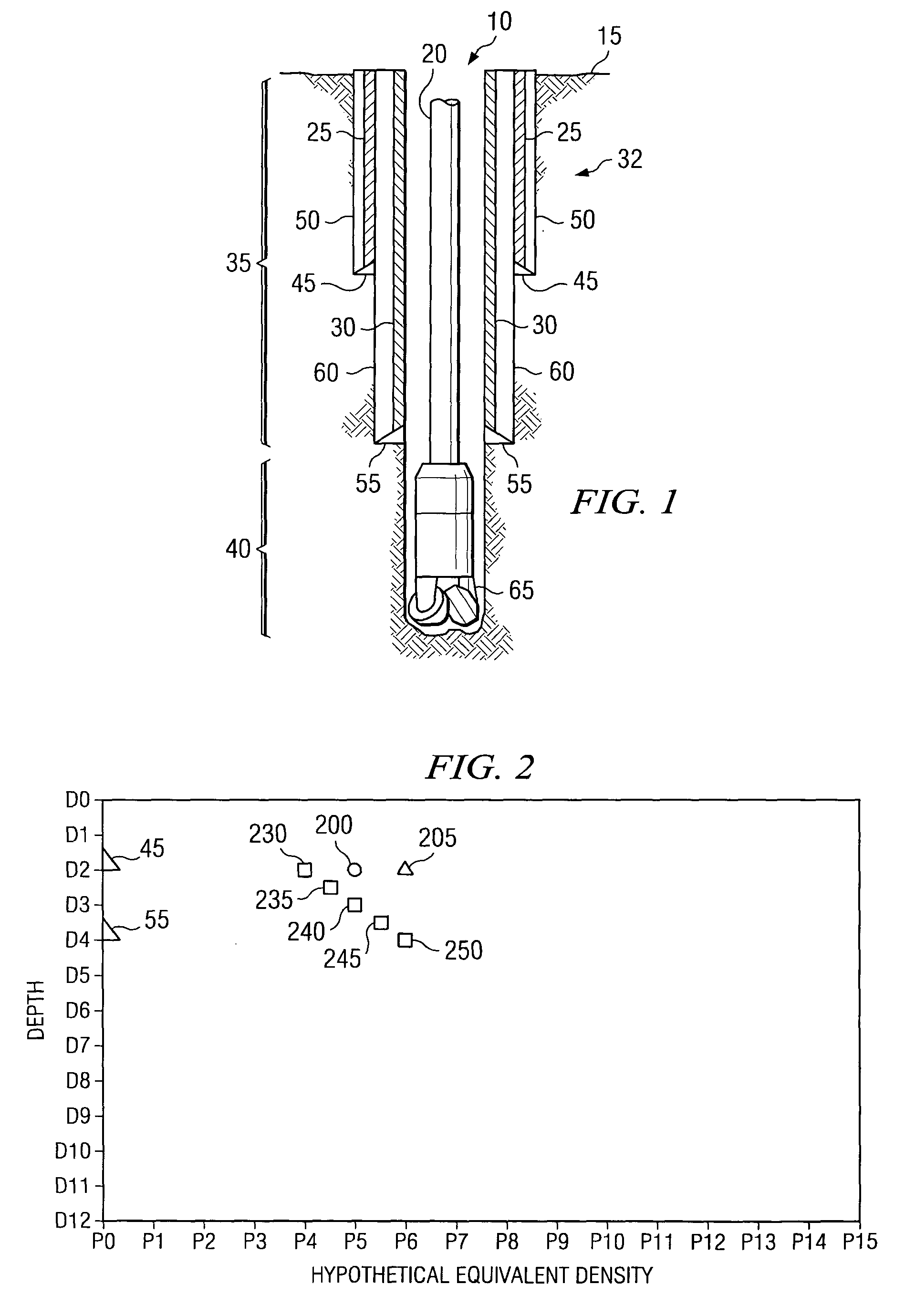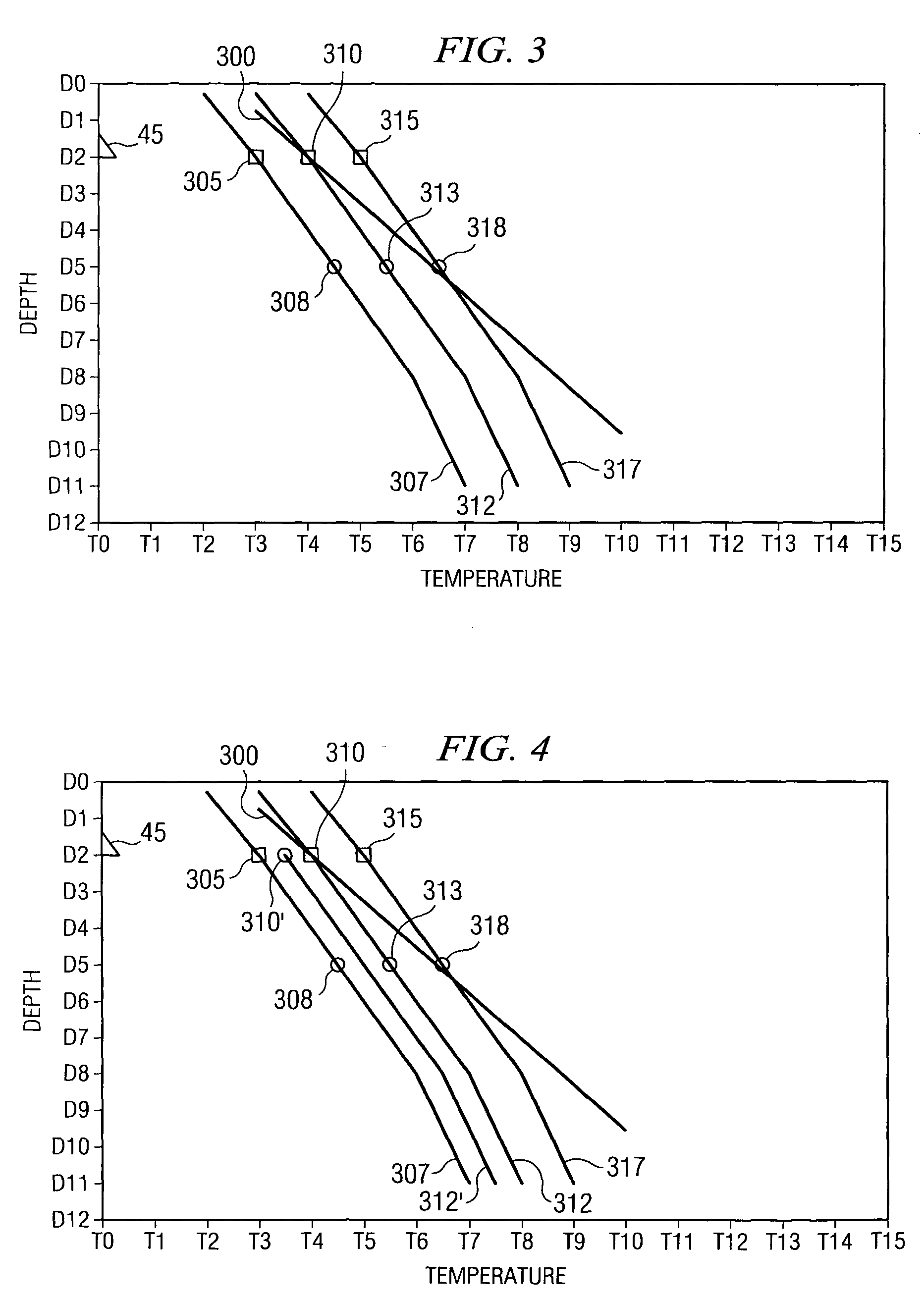Using fluids at elevated temperatures to increase fracture gradients
a technology of fracture gradient and fluid, which is applied in the direction of survey, wellbore/well accessories, insulation, etc., can solve the problems of limiting the depth of the casing, limiting the dynamic pressure maximum, and blowing out of the well, so as to reduce the diameter, increase the fracture gradient in the wellbore, and prevent the loss of drilling fluid
- Summary
- Abstract
- Description
- Claims
- Application Information
AI Technical Summary
Benefits of technology
Problems solved by technology
Method used
Image
Examples
third embodiment
[0014] In a third embodiment, the invention provides for a method for drilling a wellbore in a formation using a drilling fluid, wherein a last casing string and a last casing shoe are disposed in the wellbore, wherein the drilling fluid has a first temperature, the method comprising: (A) increasing the temperature of the drilling fluid to a desired temperature at about the last casing shoe; (B) determining at least one fracture gradient at the desired temperature, wherein the fracture gradient is determined at about the last casing shoe; (C) drilling into the formation at increasing wellbore depths below the last casing shoe, wherein at least one equivalent circulating density of the drilling fluid is calculated at about the last casing shoe; and (D) setting a next casing string at a depth at which the equivalent circulating density is about equal to or within a desired range of a fracture gradient determined at about last casing shoe.
fourth embodiment
[0015] In a fourth embodiment, the invention provides for a method for drilling a wellbore in a formation using a drilling fluid to increase fracture gradients, wherein a last casing string and a last casing shoe are disposed in the wellbore, the method comprising: (A) determining at least one fracture gradient at about the last casing shoe, wherein an initial fracture gradient is determined at a conventional drilling fluid temperature, (B) drilling into the formation below the last casing shoe at increasing depths with the drilling fluid at about the conventional drilling fluid temperature at about the last casing shoe, and wherein at least one equivalent circulating density of the drilling fluid is determined at about the last casing shoe; (C) increasing the temperature of the drilling fluid at about the last casing shoe to an elevated drilling fluid temperature; (D) drilling further into the wellbore at increasing depths with the drilling fluid at about the elevated temperature a...
fifth embodiment
[0016] In a fifth embodiment, the invention provides for a method for drilling a wellbore in a formation using a drilling fluid to increase fracture gradients, wherein a last casing string and a last casing shoe are disposed in the wellbore, wherein the drilling fluid has a first temperature, the method comprising: (A) increasing the temperature of the drilling fluid to an elevated temperature at about the last casing shoe; (B) determining at least one fracture gradient at about the last casing shoe, wherein at least one elevated fracture gradient is determined; (C) drilling into the formation below the last casing shoe at increasing depths with the drilling fluid at about the elevated temperature at about the last casing shoe, and wherein at least one equivalent circulating density of the drilling fluid is determined at about the last casing shoe; (D) increasing the temperature of the drilling fluid at about the last casing shoe to a super-static temperature; (E) drilling further i...
PUM
 Login to View More
Login to View More Abstract
Description
Claims
Application Information
 Login to View More
Login to View More - R&D
- Intellectual Property
- Life Sciences
- Materials
- Tech Scout
- Unparalleled Data Quality
- Higher Quality Content
- 60% Fewer Hallucinations
Browse by: Latest US Patents, China's latest patents, Technical Efficacy Thesaurus, Application Domain, Technology Topic, Popular Technical Reports.
© 2025 PatSnap. All rights reserved.Legal|Privacy policy|Modern Slavery Act Transparency Statement|Sitemap|About US| Contact US: help@patsnap.com



